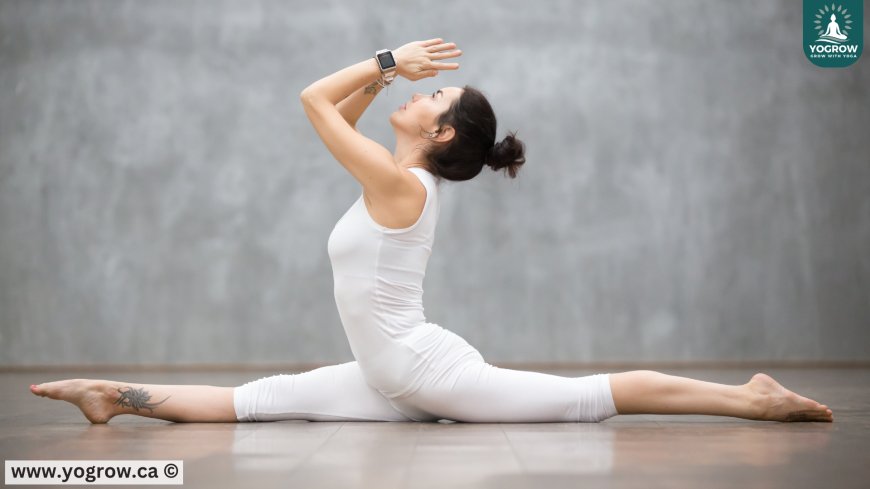How Flexible Are You? Let’s Find Out!
Boost your flexibility, reduce injury risk, and improve posture with expert tips. Discover the benefits of stretching and yoga for a healthier lifestyle!

Flexibility is a crucial yet often overlooked aspect of physical health. Whether you’re an athlete or spend most of your day at a desk, your flexibility affects your mobility, posture, and overall well-being. In today’s sedentary lifestyle, many people experience stiffness and limited range of motion, leading to discomfort and injuries. But how flexible are you, and why does it matter? Let’s explore the significance of flexibility and how you can improve it with simple yet effective techniques.
Significance of Flexibility
1. Enhances Mobility and Range of Motion
Flexibility plays a key role in movement efficiency. A greater range of motion allows for better functional movement in daily activities, whether you’re reaching for an object on a high shelf or performing a workout. Improved flexibility also reduces muscle stiffness, helping you move more freely and comfortably.
2. Reduces Risk of Injury
Tight muscles can increase the likelihood of strains, sprains, and joint injuries. According to the NHS, improving flexibility through stretching and mobility exercises helps reduce tension and minimizes the risk of muscle-related injuries. When muscles and joints work harmoniously, the body is less prone to injuries during physical activities.
3. Improves Posture and Reduces Pain
Poor posture is a common problem due to prolonged sitting and improper ergonomics. Limited flexibility can contribute to postural imbalances, leading to back, neck, and shoulder pain. Incorporating flexibility exercises, such as yoga, helps realign the body and alleviate discomfort. If you have a sedentary lifestyle, check out Yoga for a Sedentary Lifestyle: Stretch, Strengthen, Relax to counteract the negative effects of prolonged sitting.
4. Enhances Athletic Performance
For athletes, flexibility is a game-changer. It aids in better movement control, agility, and power. Whether you are a runner, swimmer, or weightlifter, flexibility ensures that your muscles are optimally prepared for exertion, reducing the risk of sudden injuries.
5. Supports Mental Well-Being
Stretching and flexibility exercises are known to relieve stress and tension. Yoga, in particular, combines mindful breathing with stretching, promoting relaxation and mental clarity. If you're unsure which yoga style suits you best, explore Which Yoga Style Is Right for You? Find Your Match.
Practical Steps to Improve Flexibility
Step 1: Start with Dynamic Stretching
Before engaging in any physical activity, perform dynamic stretches such as leg swings, arm circles, and spinal twists. These movements prepare your muscles and joints for more intense stretching and activity.
Step 2: Incorporate Static Stretching Post-Workout
After exercise, hold static stretches for 15-30 seconds per muscle group. Focus on major areas such as hamstrings, quadriceps, shoulders, and lower back.
Step 3: Practice Yoga Regularly
Yoga is one of the most effective ways to enhance flexibility. Poses like Downward Dog, Cobra, and Pigeon Pose gently stretch multiple muscle groups while improving balance and core strength.
Step 4: Stay Consistent
Flexibility doesn’t improve overnight. Dedicate at least 10-15 minutes daily to stretching and mobility exercises. Over time, your range of motion will increase, and stiffness will decrease.
Step 5: Stay Hydrated and Maintain Proper Nutrition
Dehydration can lead to muscle stiffness. Drinking enough water and consuming foods rich in magnesium and potassium, such as bananas and leafy greens, can enhance muscle function and flexibility.
Common Mistakes to Avoid
1. Skipping Warm-Up
Jumping straight into static stretching without warming up can strain cold muscles. Always start with light movement to increase blood flow.
2. Holding Your Breath
Proper breathing enhances relaxation and allows muscles to stretch more effectively. Exhale deeply as you move deeper into a stretch.
3. Overstretching
Pushing too hard can lead to muscle tears. Stretch to the point of mild discomfort, not pain.
4. Inconsistency
Flexibility requires regular practice. Sporadic stretching won’t yield long-term benefits. Aim for a routine that fits your schedule.
5. Ignoring Core Muscles
A strong core supports better flexibility and stability. Combine core-strengthening exercises with your flexibility routine for balanced results.
FAQs
1. How do I know if I’m flexible?
If you can comfortably touch your toes, perform deep squats, and move your joints without stiffness, you have good flexibility. However, flexibility varies for everyone.
2. Can I improve flexibility at any age?
Yes! Flexibility can improve at any stage of life with consistent effort. Start with gentle stretches and gradually increase intensity.
3. How often should I stretch?
Ideally, stretch daily or at least three times a week. A consistent routine brings the best results.
4. Does stretching help with back pain?
Yes, stretching reduces muscle tightness and improves posture, alleviating back pain. Focus on stretches for the lower back, hamstrings, and hips.
5. What is the best time to stretch?
Stretching after exercise or before bedtime is ideal, as your muscles are warm and more receptive to flexibility exercises.
Conclusion & Call-to-Action
Flexibility is more than just bending and stretching; it’s a vital component of overall health. From reducing injuries to improving posture and mental well-being, the benefits of flexibility are immense. Start incorporating stretching and yoga into your routine today! Ready to take the next step? Explore Yoga for a Sedentary Lifestyle: Stretch, Strengthen, Relax to improve your flexibility and overall wellness.
What's Your Reaction?
 Like
0
Like
0
 Dislike
0
Dislike
0
 Love
0
Love
0
 Funny
0
Funny
0
 Angry
0
Angry
0
 Sad
0
Sad
0
 Wow
0
Wow
0























